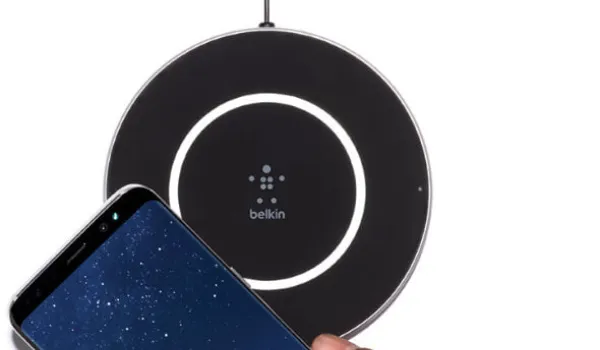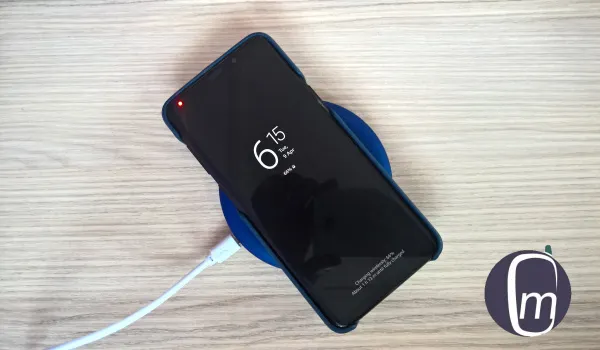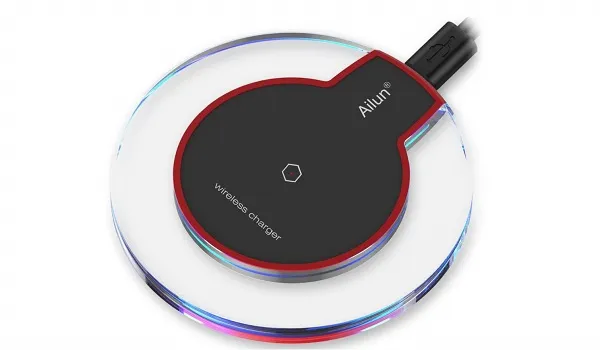Wireless charging and wireless chargers are relatively new technology in the mobile space. It allows you to charge your smartphone without having to plug a cable to it. However, a cable is involved in a different way. We explain how it works below, as well as the advantages and disadvantages of using one.
Wireless charging involves the use of a charging pad, plate, pillow, or pod, which itself is connected to a power source by a cable. It is the last mile of the charging process that is wireless – you place your compatible phone on the pad and it gets charged via electromagnetic waves.
Not all smartphones have wireless charging capabilities, which is why only compatible phones will work with a wireless charger. So, the first step is to make sure that your smartphone supports wireless charging. For more details, see our earlier article, How Wireless Charging Works.

Table of Contents
The advantages of using a Wireless Charger
Convenience: The key advantage of charging your phone wirelessly is the convenience of not plugging in a cable. Just drop it on the plate and go about your work (or play). If it rings, you pick it up, and when done, drop it. You have no need to worry about getting entangled with a cable.
Power Surge Protection: A second advantage is more applicable to people who live and work in areas prone to power surges. The absence of a direct cable connection provides some protection for the smartphone in the event of a power surge. This is because “the wireless charger cannot pass increased voltages on to your smartphone” [1]. At worst, the charging pad gets damaged, but your smartphone stays unharmed. This makes using a wireless charger safer for your smartphone than charging directly from a power outlet.
Fast Charging: Wireless charging pads charge as fast as cables do. It depends on the rating of the charger you buy. An 18W wireless charger is as fast as an 18W cable charger. So, when shopping for a wireless charging pad, be sure to check for its rating. That way you don’t end up with one that is of lower rating than your phone supports.
Wear-and-tear Protection: Wireless charging prevents wear and tear on the charging port of your smartphone. Charging port damages are some of the most common faults in mobile phones. The less you have to plug in and pull out a USB port, the longer the life of your smartphone.
The main advantages of wireless chargers are convenience and protection from the west and tear of inserting removing a physical charging port.

The disadvantages of using a Wireless Charger
Higher Cost: Wireless charging pads are more expensive than regular chargers of the same ratings, so you will spend more to enjoy the convenience and benefits of wireless charging.
No Multitasking: When using a wireless charger, you cannot use your phone at the same time, because you have to lift the phone off the pad to use it. Once you lift it, charging stops. This is unlike how you can plug your phone to a normal charger and still use it at the same time.
Using a wireless charger is slow: Wireless charging is so much slower than wired charging. The technology hasn’t kept up with fast wired charging speeds. You will find fast wireless chargers to buy, but they do not match the charging speeds available from using a cord.
Is wireless charger bad for battery?
Wireless charging produces more heat than wired charging, so your smartphone battery will warm up more when you use a wireless charger. However, this is not a problem, as safeguards have been built to keep things stable. As such, charging your device wirelessly is not bad for the battery.
Can all phones use a wireless charger?
Not at all. A phone has to have wireless charging functionality built into it for it to be capable of charging wirelessly. In some cases, a 3rd party wireless charging case or a wireless adapter/receiver can be purchased and used to add the functionality.
Why does wireless charging take so long? Why is it so slow?
Because wireless charging generates more heat than wired charging, it is necessary to keep the charge at a lower and slower pace to avoid damage to the battery of the phone.
How do I know if my phone has wireless charging?
The easiest way to know if your smartphone has wireless charging is to check the product user manual, documentation, or specifications.

The future is wireless
In all, wireless charging offers more advantages than disadvantages. But as with all things, the benefits that it offers may not be high up on your list of needs.
To get a wireless charger or not? Well, the first factor is whether or not your smartphone supports the technology. Then you decide whether getting one is worth the money and the effort or not. As with some things though, you never know how much you might like it until you take the plunge.
Wireless charging technology is here to stay though. And we will see wireless chargers evolve in the years to come. Welcome to the future.
References
[1]. Qi Certified Charging and Belkin Wireless Charging Safety.